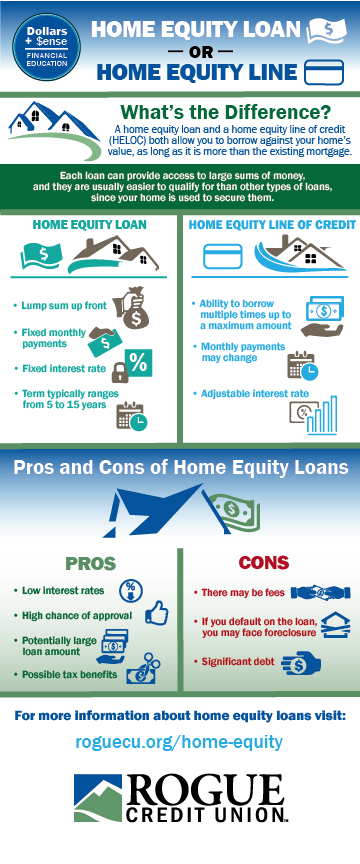Home Equity Loan Overview: Just How to Use and Certify
Home Equity Loan Overview: Just How to Use and Certify
Blog Article
Understanding the Qualification Standards for an Equity Finance Application
Browsing the landscape of equity finance applications can be a complex undertaking, often requiring an accurate understanding of the eligibility requirements established forth by loaning establishments. Delving into the globe of economic prerequisites, such as credit rating ratings, earnings confirmation, and debt-to-income ratios, is crucial for those seeking to protect this kind of funding.
Credit Report Demand
What is the minimum credit rating called for to get an equity finance application? When looking for an equity car loan, financial organizations generally take into consideration the applicant's credit rating as an important consider establishing qualification. While particular needs may differ among loan providers, an excellent credit history rating is usually necessary to secure positive funding terms. In a lot of cases, a minimum credit rating of 620 is needed to receive an equity financing. Some loan providers might like greater credit history ratings, such as 680 or above, to supply reduced interest rates and much better terms.
A credit report reflects a person's creditworthiness based on their credit scores background, consisting of variables like settlement background, credit rating utilization, length of credit scores background, brand-new debt accounts, and credit score mix. Lenders utilize this rating to analyze the danger of providing money to a consumer. A higher credit rating indicates liable monetary habits and minimizes the loan provider's danger, making it more probable for the applicant to get an equity lending with favorable conditions.
Income Confirmation Process
Throughout the equity car loan application procedure, the earnings confirmation step plays a vital function in assessing the applicant's economic security and payment capacity. Lenders need proof of revenue to make certain that customers have the economic ways to repay the finance. Usually, this involves supplying pay stubs, tax obligation returns, and bank declarations to verify the candidate's income sources and security.

Loan-to-Value Ratio Consideration
When reviewing equity lending applications, one important aspect that lending institutions take into consideration is the loan-to-value proportion of the collateral being offered - Equity Loans (Alpine Credits). The loan-to-value (LTV) ratio is a monetary term made use of by lending institutions to express the ratio of a lending to the worth of a property purchased. In the context of equity fundings, the LTV proportion is computed by separating the total exceptional lending amount by the evaluated worth of the residential or commercial property. A lower LTV ratio suggests a reduced danger for the lending institution, as it implies the customer has more equity in the residential property.
Lenders usually have maximum LTV proportions that they are eager to approve for equity finance applications. This proportion acts as a procedure of danger for the loan provider, as a higher LTV proportion indicates that the consumer has much less equity in the residential property and may be at a greater threat of default. Debtors with lower LTV proportions are normally viewed as much less dangerous and may be provided a lot more beneficial lending terms, such as reduced rate of interest rates or greater funding amounts. For that reason, understanding and managing the loan-to-value proportion is important for borrowers seeking equity fundings.
Debt-to-Income Ratio Examination
Examining the debt-to-income proportion is a vital part in the assessment of equity finance applications. The debt-to-income ratio is determined by separating the total regular monthly financial obligation settlements of a private by their gross monthly income. Lenders use this proportion to determine an applicant's capability to take care of added financial debt and meet regular monthly settlements. A lower debt-to-income ratio shows a healthier economic circumstance, making the debtor extra likely to get an equity loan.
Lenders normally have maximum debt-to-income ratio demands, frequently around 43% to 50%. Exceeding this limit might lead to the finance application being refuted. Debtors can improve their debt-to-income proportion by repaying existing financial obligations, enhancing their income, or reducing their monthly costs.
It is important for individuals taking into consideration an equity lending to examine their debt-to-income ratio in advance. This analysis not just impacts financing approval however also affects the car loan amount and rate of interest supplied. By keeping a healthy and balanced debt-to-income ratio, borrowers can boost their possibilities of safeguarding an equity finance on positive terms.
Home Appraisal Significance
Why is residential property appraisal crucial in the equity financing application process? Property assessment plays an important duty in identifying the worth of the residential property being utilized as collateral for the equity funding. Lenders require a residential property appraisal to guarantee that the worth of the building lines up with the loan quantity being requested. This is essential for the loan provider to analyze the threat associated with offering the loan and to shield their financial investment.
Residential property assessment is very important as it provides a unbiased and professional examination of the residential or commercial property's present market price (Equity Loan). This valuation helps the lender determine the loan-to-value ratio, which is a vital aspect in making a decision the terms of the finance. A greater assessment value might cause a lot more positive funding terms for the debtor, such as lower rate of interest or a greater financing quantity
Moreover, residential property evaluation aids in preventing fraudulence and makes certain that the property's worth is precisely represented. By getting a detailed appraisal record, lenders can make enlightened choices relating to the car loan application, ultimately profiting both the try this website customer and the lender.

Verdict
To conclude, understanding the qualification criteria for an equity financing application is vital for possible customers. Factors such as credit report, earnings confirmation, loan-to-value proportion, debt-to-income ratio, and residential property evaluation all play a substantial role in figuring out whether an applicant will be accepted for an equity car loan. By fulfilling these requirements, people can increase their possibilities of safeguarding the financing they need for different economic purposes.
The loan-to-value (LTV) ratio is a monetary term used by loan providers to share the proportion of a loan to the value of a property purchased. In the context of equity fundings, the LTV proportion is computed by separating the overall superior loan amount by the appraised value of the residential property. Borrowers with lower LTV ratios are typically seen as less high-risk and might be supplied much more positive financing terms, such as reduced passion rates or higher lending amounts. A higher appraisal worth might result in extra desirable lending terms for the debtor, such as reduced passion prices or a greater finance quantity.
Aspects such as debt rating, earnings confirmation, loan-to-value proportion, debt-to-income ratio, and residential or commercial property appraisal all play a significant function in identifying whether an applicant will certainly be accepted for an equity financing. Alpine Credits.
Report this page